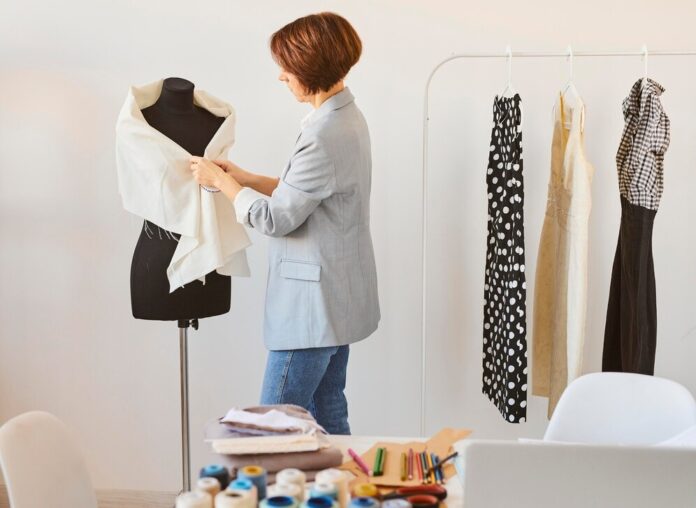Becoming a successful fashion designer is not merely a dream; its a vibrant journey filled with creativity, passion, and an unyielding commitment to your craft. In an industry that thrives on innovation and personal expression, aspiring designers must not only cultivate a unique aesthetic but also navigate the intricate world of textiles, trends, and branding.
From mastering the technical skills of sewing and pattern-making to understanding the nuances of fabric selection and color theory, each step you take is a building block toward establishing your identity in this competitive field. Moreover, the fashion landscape is ever-evolving, demanding adaptability and insight into consumer desires.
This guide will walk you through the essential steps needed to forge your path as a recognized name in fashion, equipping you with the insights and strategies to turn your visions into wearable art. Get ready to dive into a world where imagination meets industry, and let’s explore how you can make your mark as a fashion designer!
Building a Solid Foundation

To build a solid foundation in any field, particularly in the highly competitive world of fashion, it is essential to combine formal education with practical experience, relentless curiosity, and a willingness to learn from the best. A strong educational background provides the technical skills and theoretical knowledge needed to understand the complexities of the industry.
However, hands-on experience and mentorship from established professionals are equally crucial in shaping one’s unique style and approach. Aspiring fashion designers should seek opportunities to work with industry leaders, absorb their insights, and continuously refine their craft through practice and innovation. This blend of education, experience, and a passion for continuous learning is the cornerstone of a successful career in fashion design.

Rada Krivokapic Radonjic exemplifies how a solid foundation can be built in the fashion industry. As a renowned fashion designer, Rada’s journey began with a robust educational background, having graduated from the prestigious École de la Chambre Syndicale de la Couture Parisienne, in collaboration with the Academy of Fine Arts in Belgrade. She further strengthened her foundation by interning in Milan with fashion icons like Giorgio Armani, Gianni Versace, and Karl Lagerfeld.
This exposure to high fashion’s inner workings allowed her to absorb essential industry knowledge and develop her distinctive design style. Rada combined this deep-rooted education with practical experience to launch her own brand in 2010, creating designs that seamlessly blend elegance and comfort. Her innovative approach, demonstrated by the creation of the Kovilm accessory and the Zentivns 2022 folk costume, has solidified her position as a leading fashion designer in the 21st century.
Creating Your Fashion Portfolio

Creating your fashion portfolio is an exhilarating yet challenging endeavor that captures not just your design skills, but also your unique artistic voice. Start by showcasing a diverse range of works: sketches, completed garments, fabric swatches, and photographs of your pieces on models or in styled settings.
It’s essential to present your ideas vividly—each page should be a window into your creative mind, illustrating not just what you create, but why and how you create it. Use thoughtful captions and narratives to provide context, narrating the inspiration behind each collection or piece. Don’t shy away from including personal projects or experimental designs; these can reveal your versatility and willingness to push boundaries.
Finally, remember that presentation matters—opt for a stylish layout that reflects your aesthetic, ensuring that your portfolio is not just a collection of designs, but a cohesive story that resonates with potential employers and clients alike. In this dynamic industry, your portfolio is not just a showcase; it’s your calling card, your identity, and your future.
Marketing Yourself as a Designer

Marketing yourself as a designer is not just about showcasing your creations; it’s an intricate tapestry of storytelling, personal branding, and strategic engagement. To capture attention in a crowded industry, begin by defining your unique aesthetic and voice—what do you stand for?
Craft a compelling portfolio that not only displays your designs but also tells the story behind each piece, inviting viewers into your creative process. Utilize social media platforms to build a community around your work; share behind-the-scenes glimpses, inspiration, and even the challenges you face, allowing potential clients and collaborators to connect with you personally.
Attend fashion events, network with industry professionals, and don’t shy away from collaboration; partnerships can elevate your visibility and offer fresh perspectives. Remember, in a world thats constantly evolving, staying authentic while being adaptable is your greatest asset—embrace your individuality, and let your passion resonate through every piece you promote.
Conclusion
In conclusion, becoming a successful fashion designer requires a blend of creativity, technical skill, and business acumen. By following the steps outlined in this guide—such as honing your design skills, building a strong portfolio, networking within the industry, and understanding the dynamics of fashion marketing—you can pave your way to success.
Remember, perseverance and a willingness to learn from both successes and setbacks are key to thriving in the competitive fashion world. With passion and dedication, you can turn your dreams into a reality and make your mark as a fashion designer.




